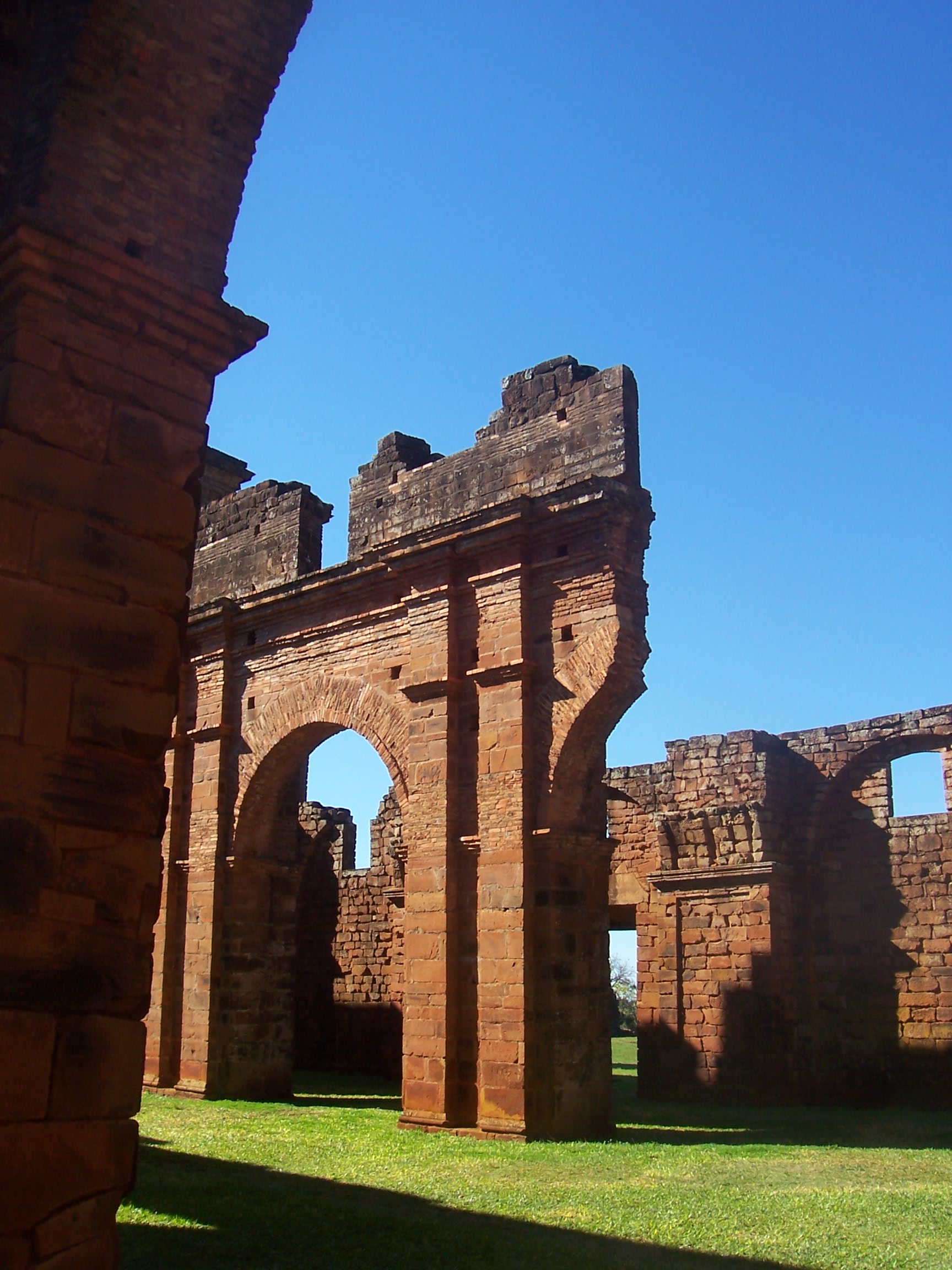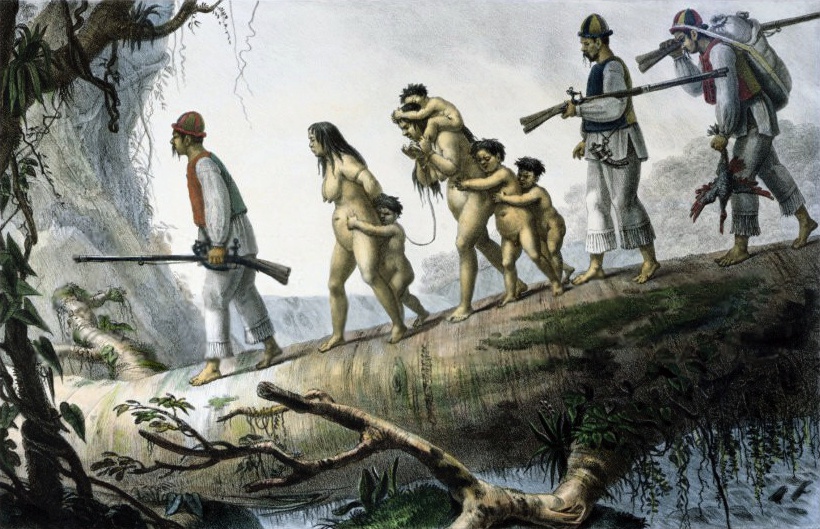|
Ruins Of São Miguel Das Missões
The Ruins of São Miguel das Missões (; Portuguese language, Portuguese for 'St. Michael of the Mission (Christian), Missions'), also known as São Miguel Arcanjo, and by its former Spanish language, Spanish name Misión de San Miguel Arcángel, is a UNESCO World Heritage Site located in the municipalities of Brazil, municipality of São Miguel das Missões, in the state of Rio Grande do Sul, southern Brazil. The São Miguel Jesuit mission was part of a vast programme of Evangelism, evangelisation by the Jesuits, who extended their efforts eastwards and westwards, leaving a strong mark on many countries around the world, which can still be seen today. The Jesuit settlement was established at a time when the territory was under Spanish rule and was the most notable of the Seven Towns, which have become an important part of the history of Rio Grande do Sul and Brazil and a source of rich traditions. Built in 1687 according to an advanced organisational plan for its location and tim ... [...More Info...] [...Related Items...] OR: [Wikipedia] [Google] [Baidu] |
São Miguel Das Missões
São Miguel das Missões is a municipality in Rio Grande do Sul state, southern Brazil. Important 17th century Spanish Jesuit mission ruins are located in the municipality. San Miguel Mission is within Santo Ângelo Microregion, and the Riograndense Northwest Mesoregion. The city covers and had a population of 7,683 residents. Mission São Miguel das Missões The town grew around the Spanish colonial Jesuit Reduction, Mission San Miguel Arcángel, founded in 1632. After becoming part of Brazil it was renamed Mission São Miguel das Missões. In 1984 Mission São Miguel das Missões was one of four sites of Jesuit reductions in Argentina and one in Brazil to be declared by UNESCO the World Heritage Sites. Museum The Mission Museum is a history museum located in São Miguel Mission. The creation of the museum was one of the first initiatives of the Office of Historical and Artistic Heritage, today IPHAN. In 1937 the SPHAN was created and in the same year, the archite ... [...More Info...] [...Related Items...] OR: [Wikipedia] [Google] [Baidu] |
History Of Rio Grande Do Sul
The history of Rio Grande do Sul begins with the arrival of Human, humans in the region, around 12,000 years ago. Its most dramatic changes, however, occurred in the last five centuries, after the Portuguese colonization of the Americas, colonisation of Brazil. This most recent period took place amid several external and internal armed conflicts, some of which with great violence. Overview Guilhermino CĂ©sar mentioned that the history of the state "is one of the most recent chapters in Brazilian history" because when Polyphony, polyphonic Mass (liturgy), masses were already being sung in the Northeast Region, Brazil, Northeast, Rio Grande do Sul was still occupied by a handful of Portuguese villages and cattle ''estancias''. The south-southeast was a "no man's land" where Spain, Spanish troops sent by Buenos Aires often marched, defending the interests of the Monarchy of Spain, Spanish Crown, the legal owner of the area at that time. Essentially, Rio Grande do Sul, until the end ... [...More Info...] [...Related Items...] OR: [Wikipedia] [Google] [Baidu] |
Ignatius Of Loyola
Ignatius of Loyola ( ; ; ; ; born Íñigo López de Oñaz y Loyola; – 31 July 1556), venerated as Saint Ignatius of Loyola, was a Basque Spaniard Catholic priest and theologian, who, with six companions, founded the religious order of the Society of Jesus (Jesuits), and became its first Superior General, in Paris in 1541. Ignatius envisioned the purpose of the Society of Jesus to be missionary work and teaching. In addition to the vows of chastity, obedience and poverty of other religious orders in the church, Loyola instituted a fourth vow for Jesuits of obedience to the Pope, to engage in projects ordained by the pontiff. Jesuits were instrumental in leading the Counter-Reformation. As a former soldier, Ignatius paid particular attention to the spiritual formation of his recruits and recorded his method in the '' Spiritual Exercises'' (1548). In time, the method has become known as Ignatian spirituality. He was beatified in 1609 and was canonized as a saint on 12 M ... [...More Info...] [...Related Items...] OR: [Wikipedia] [Google] [Baidu] |
Renaissance
The Renaissance ( , ) is a Periodization, period of history and a European cultural movement covering the 15th and 16th centuries. It marked the transition from the Middle Ages to modernity and was characterized by an effort to revive and surpass the ideas and achievements of classical antiquity. Associated with great social change in most fields and disciplines, including Renaissance art, art, Renaissance architecture, architecture, politics, Renaissance literature, literature, Renaissance exploration, exploration and Science in the Renaissance, science, the Renaissance was first centered in the Republic of Florence, then spread to the Italian Renaissance, rest of Italy and later throughout Europe. The term ''rinascita'' ("rebirth") first appeared in ''Lives of the Artists'' () by Giorgio Vasari, while the corresponding French word was adopted into English as the term for this period during the 1830s. The Renaissance's intellectual basis was founded in its version of Renaiss ... [...More Info...] [...Related Items...] OR: [Wikipedia] [Google] [Baidu] |
Christian Mission
A Christian mission is an organized effort to carry on evangelism, in the name of the Christian faith. Missions involve sending individuals and groups across boundaries, most commonly geographical boundaries. Sometimes individuals are sent and are called missionary, missionaries, and historically may have been based in mission stations. When groups are sent, they are often called mission teams and they undertake mission trips. There are a few different kinds of mission trips: Short-term mission, short-term, long-term, relational and those that simply help people in need. Some people choose to dedicate their whole lives to mission. Missionaries preach the Christian faith and sometimes administer the sacraments, and provide humanitarian aid or services. Christian doctrines (such as the "Doctrine of Love" professed by many missions) permit the provision of aid without requiring religious conversion. Nonetheless, the provision of help has always been closely tied to evangelization ef ... [...More Info...] [...Related Items...] OR: [Wikipedia] [Google] [Baidu] |
Christianity
Christianity is an Abrahamic monotheistic religion, which states that Jesus in Christianity, Jesus is the Son of God (Christianity), Son of God and Resurrection of Jesus, rose from the dead after his Crucifixion of Jesus, crucifixion, whose coming as the Messiah#Christianity, messiah (Christ (title), Christ) was Old Testament messianic prophecies quoted in the New Testament, prophesied in the Old Testament and chronicled in the New Testament. It is the Major religious groups, world's largest and most widespread religion with over 2.3 billion followers, comprising around 28.8% of the world population. Its adherents, known as Christians, are estimated to make up a majority of the population in Christianity by country, 157 countries and territories. Christianity remains Christian culture, culturally diverse in its Western Christianity, Western and Eastern Christianity, Eastern branches, and doctrinally diverse concerning Justification (theology), justification and the natur ... [...More Info...] [...Related Items...] OR: [Wikipedia] [Google] [Baidu] |
Apostles In The New Testament
In Christian theology and ecclesiology, the apostles, particularly the Twelve Apostles (also known as the Twelve Disciples or simply the Twelve), were the primary Disciple (Christianity), disciples of Jesus according to the New Testament. During the Life of Jesus in the New Testament, life and ministry of Jesus in the Christianity in the 1st century, 1st century AD, the apostles were his closest followers and became the primary teachers of the gospel message of Jesus. There is also an Eastern Christianity, Eastern Christian tradition derived from the Gospel of Luke that there were Seventy disciples, seventy apostles during the time of Jesus' ministry. The commissioning of the Twelve Apostles during the ministry of Jesus is described in the Synoptic Gospels. After his Resurrection of Jesus, resurrection, Jesus sent eleven of them (as Judas Iscariot by then had Judas Iscariot#Death, died) by the Great Commission to spread his teachings to all nations. In the Pauline epistles, ... [...More Info...] [...Related Items...] OR: [Wikipedia] [Google] [Baidu] |
Jesus
Jesus (AD 30 or 33), also referred to as Jesus Christ, Jesus of Nazareth, and many Names and titles of Jesus in the New Testament, other names and titles, was a 1st-century Jewish preacher and religious leader. He is the Jesus in Christianity, central figure of Christianity, the Major religious groups, world's largest religion. Most Christians consider Jesus to be the Incarnation (Christianity), incarnation of God the Son and awaited Messiah#Christianity, messiah, or Christ (title), Christ, a descendant from the Davidic line that is prophesied in the Old Testament. Virtually all modern scholars of classical antiquity, antiquity agree that Historicity of Jesus, Jesus existed historically. Accounts of Life of Jesus, Jesus's life are contained in the Gospels, especially the four canonical Gospels in the New Testament. Since the Age of Enlightenment, Enlightenment, Quest for the historical Jesus, academic research has yielded various views on the historical reliability of t ... [...More Info...] [...Related Items...] OR: [Wikipedia] [Google] [Baidu] |
William Holl The Younger09a
William is a masculine given name of Germanic origin. It became popular in England after the Norman conquest in 1066,All Things William"Meaning & Origin of the Name"/ref> and remained so throughout the Middle Ages and into the modern era. It is sometimes abbreviated "Wm." Shortened familiar versions in English include Will or Wil, Wills, Willy, Willie, Bill, Billie, and Billy. A common Irish form is Liam. Scottish diminutives include Wull, Willie or Wullie (as in Oor Wullie). Female forms include Willa, Willemina, Wilma and Wilhelmina. Etymology William is related to the German given name ''Wilhelm''. Both ultimately descend from Proto-Germanic ''*Wiljahelmaz'', with a direct cognate also in the Old Norse name ''Vilhjalmr'' and a West Germanic borrowing into Medieval Latin ''Willelmus''. The Proto-Germanic name is a compound of *''wiljĂ´'' "will, wish, desire" and *''helmaz'' "helm, helmet".Hanks, Hardcastle and Hodges, ''Oxford Dictionary of First Names'', Oxford Univers ... [...More Info...] [...Related Items...] OR: [Wikipedia] [Google] [Baidu] |
National Institute Of Historic And Artistic Heritage
The National Historic and Artistic Heritage Institute (, IPHAN) is a heritage register of the federal government of Brazil. It is responsible for the preservation of buildings, monuments, structures, objects and sites, as well as the register and safeguard of intangible cultural heritage deemed of historic or cultural importance to the country. IPHAN maintains 1,047 sites, which include historic buildings, city centers, and landscapes. It additionally lists a growing number of intangible cultural heritage An intangible cultural heritage (ICH) is a practice, representation, expression, knowledge, or skill considered by UNESCO to be part of a place's cultural heritage. Buildings, historic places, monuments, and artifacts are cultural property. In ... entities. The presidency of the institute was held by only two individuals over its first forty years. Rodrigo Melo Franco led SPHAN/IPHAN from 1937 until his retirement in 1967; his successor was the architect Renato Soeiro, ... [...More Info...] [...Related Items...] OR: [Wikipedia] [Google] [Baidu] |
GuaranĂ People
The Guarani are a group of culturally-related Indigenous peoples of South America. They are distinguished from the related Tupi people, Tupi by their use of the Guarani language. The traditional range of the Guarani people is in what is now Paraguay between the Paraná River and lower Paraguay River, the Misiones Province, Misiones Province of Argentina, southern Brazil once as far east as Rio de Janeiro, and parts of Uruguay and Bolivia. Although their demographic dominance of the region has been reduced by European colonization of the Americas, European colonisation and the commensurate rise of mestizos, there are contemporary Guarani populations in Paraguay and parts of Argentina and Bolivia. Most notably, the Guarani language, still widely spoken across traditional Guarani homelands, is one of the two official languages in Paraguay, the other one being Spanish. The Paraguayan population learns Guarani both informally from social interaction and formally in public schools. In ... [...More Info...] [...Related Items...] OR: [Wikipedia] [Google] [Baidu] |







